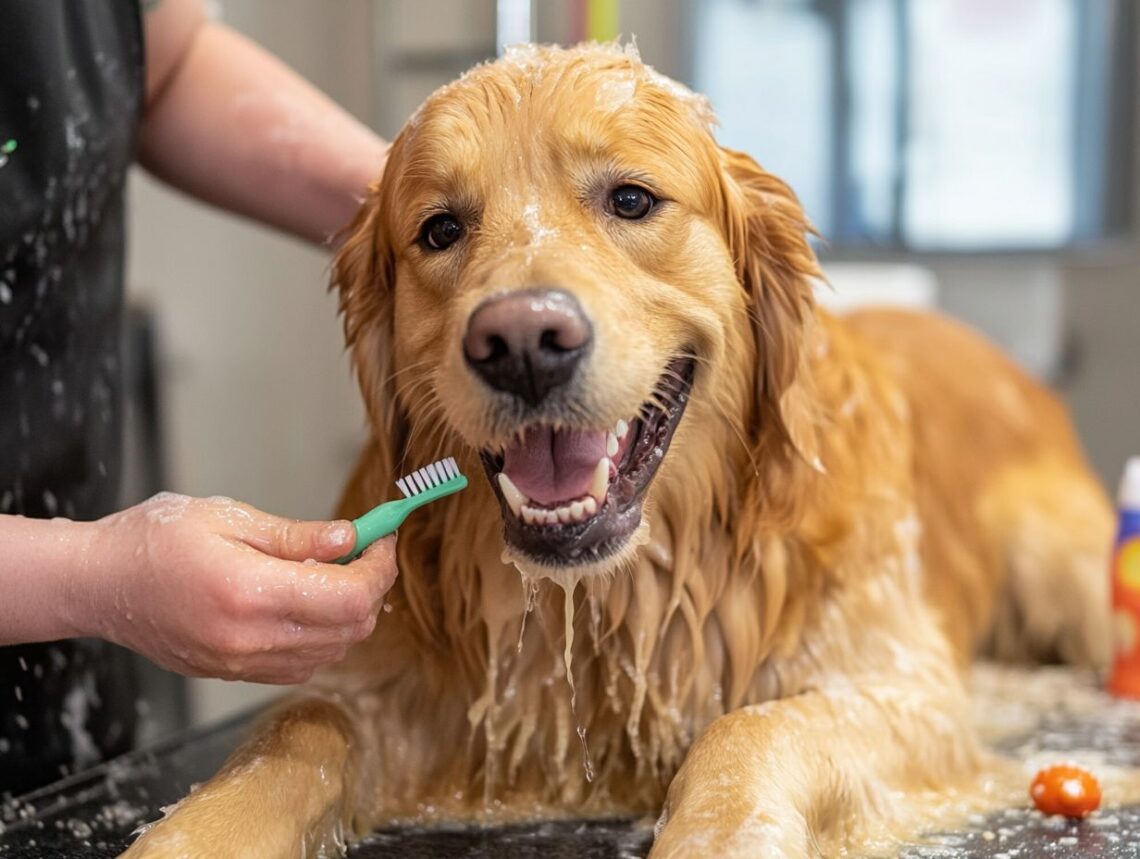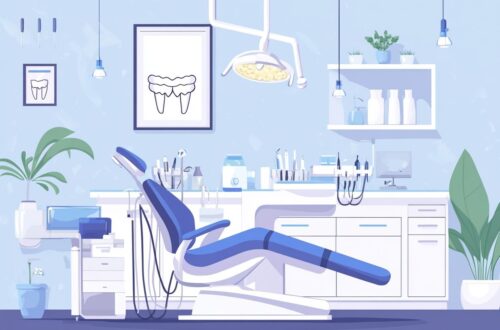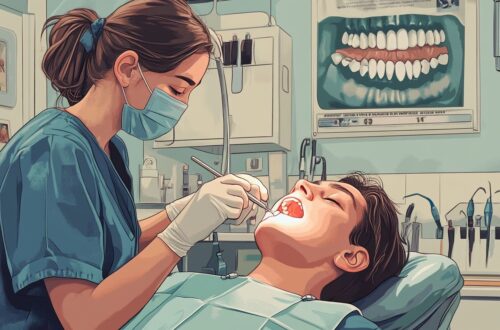Maintaining a dog’s dental health is essential for their overall well-being, yet it is often overlooked.
Similar to humans, dogs can experience dental issues that may result in pain, infections, and potentially more severe health complications.
This article examines the significance of cleaning a dog’s teeth, identifies common indicators of dental problems, and shares effective methods for maintaining their oral health.
It also offers practical prevention tips and guidance on when to seek professional assistance.
Prioritizing a pet’s oral hygiene can contribute to a happier and healthier life for both the pet and their owner.
Key Takeaways:
1. Regularly cleaning your dog’s teeth is crucial for their overall health. Neglecting dental care can lead to serious dental issues and even affect other organs.
2. Look out for signs of dental problems in your dog such as bad breath, difficulty eating, and excessive drooling. These issues should not be ignored as they can indicate a larger problem.
3. Proper brushing techniques and tools are essential for effective teeth cleaning. If your dog doesn’t tolerate brushing, consider alternative methods such as dental chews or water additives.
4. Along with regular cleaning, prevention is key to maintaining your dog’s oral health. Make sure to incorporate good oral hygiene habits and practices into your dog’s routine.
5. If you notice persistent dental issues or your dog exhibits signs of discomfort, it’s important to seek professional help. A vet can properly diagnose and treat any underlying dental problems.
The Importance of Cleaning Your Dog’s Teeth

Maintaining your dog’s dental health is a critical aspect of ensuring their overall well-being. Much like humans, dogs are vulnerable to dental issues, such as plaque accumulation and periodontal disease, which can result in significant health complications if not properly managed. Dog owners should be aware of the importance of regular brushing and the use of canine-specific products like dog toothpaste and dog toothbrushes.
Regular brushing and cleaning of your dog’s teeth contribute to fresh breath, healthy gums, and a reduced risk of dental disease. The American Veterinary Medical Association and the American Kennel Club (AKC) emphasize that proper dental care is essential for enhancing your dog’s quality of life and longevity. Veterinarians and veterinary dentists, such as Thoulton W. Surgeon, also stress the importance of maintaining canine oral health.
Therefore, it is a responsibility that every dog owner should actively undertake.
Why Dental Care is Essential for Dogs
Dental care is essential for dogs, as it directly impacts their overall health and can prevent a variety of dental diseases, including plaque accumulation and gum issues.
Neglecting this crucial aspect of pet care can result in severe consequences, such as periodontal disease, which not only affects the oral cavity but may also allow bacteria to enter the bloodstream, potentially leading to systemic diseases such as heart, liver, and kidney problems.
Veterinary dentists, including Thoulton W. Surgeon, emphasize the significance of routine dental check-ups and cleanings to identify early signs of dental concerns and to educate pet owners on effective at-home dental care practices, including the use of dental chews, dental wipes, and sprays.
Regular brushing and the use of dog dental treats, such as dental chews and powders, can significantly reduce plaque buildup and enhance a dog’s quality of life. PetLab Co. offers a range of products to assist in maintaining canine dental health.
By prioritizing dental hygiene, pet owners can ensure that their canine companions remain happy and healthy for many years to come.
Signs of Dental Problems in Dogs
Recognizing the signs of dental problems in dogs is essential for timely intervention and treatment, which can prevent further complications.
Common indicators of dental issues include:
- Halitosis (bad breath) often improved with dog dental spray
- Swollen gums
- Difficulty chewing
- Excessive drooling
By observing these signs, dog owners can determine when to seek consultation with a veterinarian, as untreated dental problems may progress into severe conditions, including periodontal disease and tooth loss.
Regular dental check-ups are crucial for early detection of these issues, ensuring that the pet’s oral health remains optimal.
Identifying Oral Health Issues
Identifying oral health issues in dogs necessitates careful observation by their owners, who should be vigilant for symptoms such as halitosis, swollen or inflamed gums, and difficulty in eating.
Along with these indicators, owners may also observe excessive drooling, bleeding gums, or visible tartar accumulation on their pet’s teeth. These concerns frequently arise from conditions such as periodontal disease, which can result from inadequate dental hygiene or a diet deficient in essential nutrients.
It is imperative for caregivers to recognize that neglecting dental care can lead to significant health issues beyond the oral cavity, as bacteria may enter the bloodstream and affect critical organs.
Should any of these symptoms be noted, it is highly advisable to seek prompt veterinary attention to facilitate timely treatment and prevent further complications.
Methods for Cleaning Your Dog’s Teeth
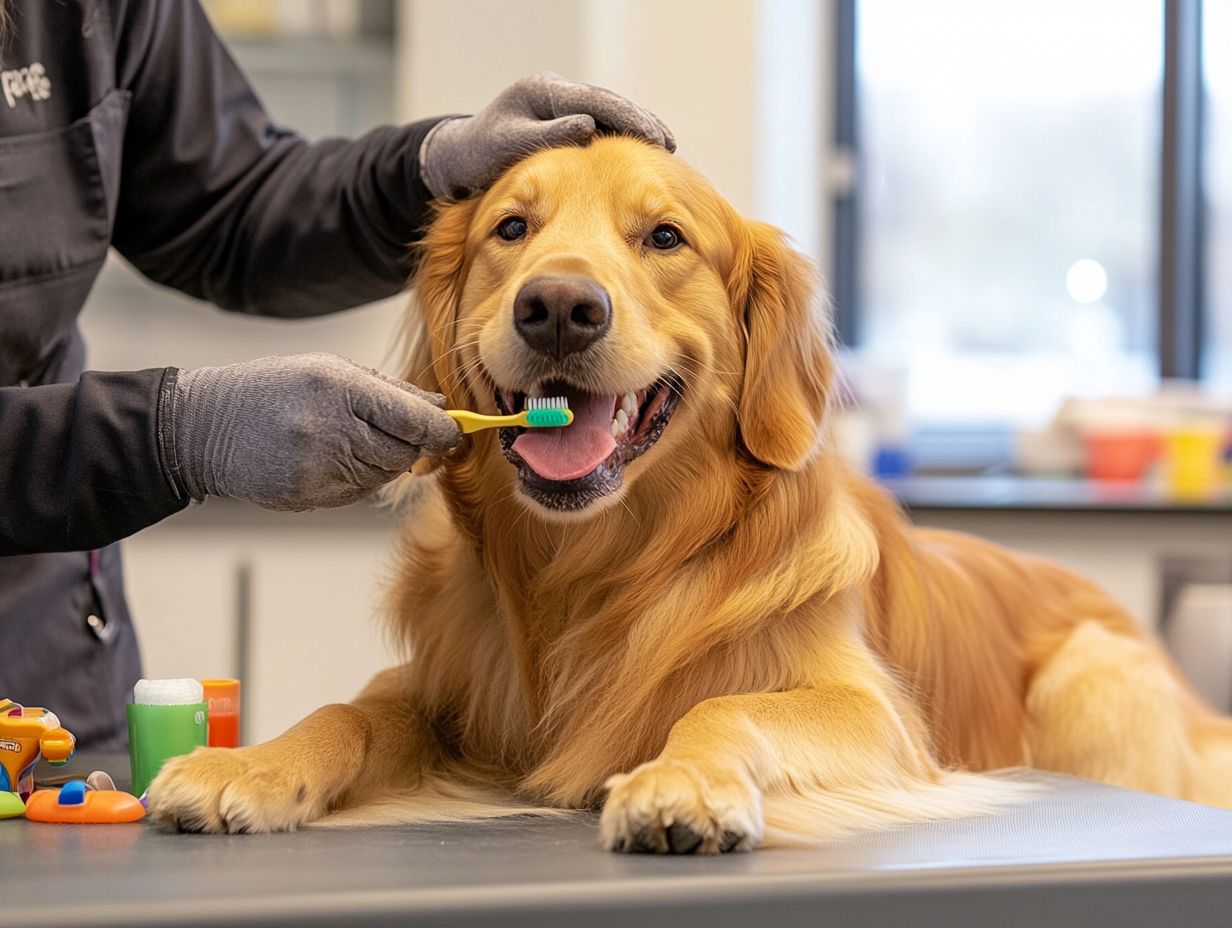
Implementing effective methods for maintaining your dog’s dental hygiene is crucial for preventing dental diseases. The most widely recommended approaches include regular brushing, the use of dog dental chews, and providing chew toys designed to clean teeth and improve gum health.
- Regular brushing with veterinary-approved dog toothpaste
- Utilizing dental chews that aid in reducing plaque buildup
- Providing chew toys specifically designed to enhance oral health
Furthermore, some pet owners may choose to pursue professional dental treatments from accredited veterinary dental colleges to ensure comprehensive care. Each of these methods offers distinct advantages, and a combination of these strategies can significantly improve the overall dental health of your dog.
Brushing Techniques and Tools
Effective dental care for dogs necessitates an understanding of proper techniques and the utilization of appropriate tools, such as a dog toothbrush and canine-friendly toothpaste.
To ensure optimal dental hygiene, it is essential to establish a routine that includes brushing at least two to three times per week. For effective brushing, the toothbrush should be angled at 45 degrees to effectively reach the gum line, employing gentle circular motions to remove plaque buildup. It is imperative to select products specifically designed for canine dental care, as human toothpaste can pose a risk to a dog’s health.
Additionally, incorporating dental chews, dental powders, and rinses as complementary aids can further enhance your pet’s oral health, thereby making the process more enjoyable and effective overall.
Alternative Cleaning Methods
Along with traditional brushing, dog owners have access to several alternative cleaning methods to maintain their pet’s oral health, including dental chews, sprays, and wipes.
These alternatives can be particularly advantageous for pets that exhibit resistance to having their teeth brushed, thereby alleviating the dental care burden for both the owner and the dog.
For example, dental chews serve a dual purpose; they are enjoyable for dogs and also assist in reducing plaque and tartar buildup through the mechanical action of chewing, effectively merging playtime with dental hygiene. Dog dental powders can also be added to food for an additional cleaning effect.
Conversely, dental wipes offer a quick and efficient solution for cleaning teeth without the necessity of a toothbrush, making them ideal for pet owners on the go. Similarly, dental sprays can be utilized to freshen breath and clean teeth, presenting a convenient option for busy pet owners.
Incorporating these methods into a dog’s daily routine can facilitate improved oral health while ensuring the pet remains happy and engaged.
Preventing Dental Issues in Dogs
Preventing dental issues in dogs is largely attainable through the implementation of consistent oral hygiene practices and regular veterinary check-ups, which are essential for maintaining gum health and overall dental well-being.
Oral Hygiene Tips and Practices
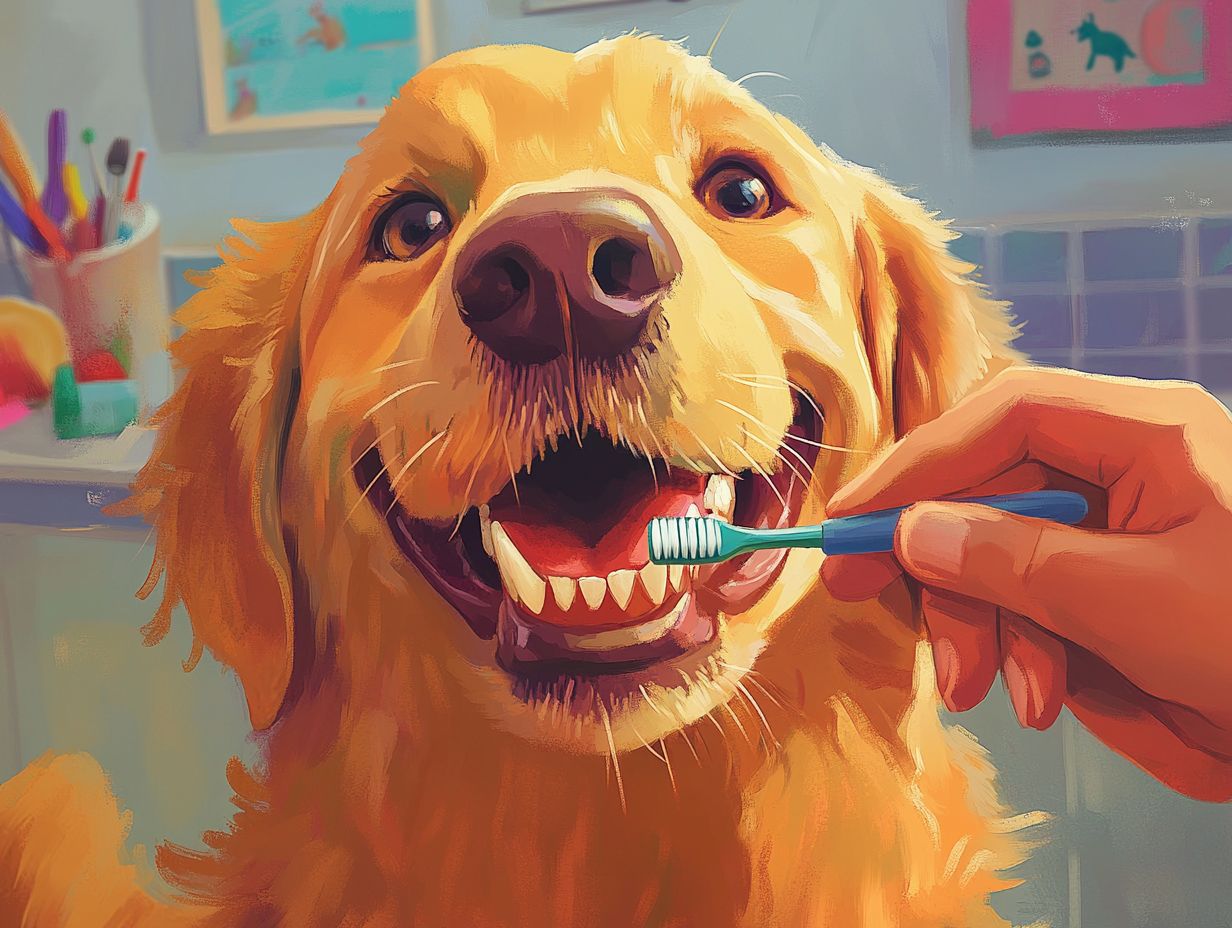
Implementing effective oral hygiene practices is essential for significantly enhancing a dog’s dental health and preventing future dental issues, including regular cleaning, which you can learn more about in this guide on cleaning dog teeth.
Regularly brushing a dog’s teeth is one of the most impactful practices to adopt, as it effectively removes plaque and food debris that can lead to tartar buildup. For optimal results, it is recommended to use a toothbrush specifically designed for dogs, along with toothpaste that is safe for canine use; human toothpaste can be harmful to pets.
Incorporating dental chews into a pet’s diet can also contribute to maintaining oral health, as these chews help clean teeth while providing a palatable treat.
Additionally, scheduling routine veterinary visits is crucial, as professionals can conduct thorough dental cleanings and identify any underlying issues early. This proactive approach ensures that your pet enjoys a healthy smile for years to come.
When to Seek Professional Help
Understanding when to seek professional assistance for your dog’s dental health is essential in preventing more serious dental issues, such as periodontal disease and other related complications.
Signs that Your Dog Needs a Vet Visit
Certain indicators suggest that a dog may require a veterinary visit for dental care, including persistent bad breath, difficulty eating, and swollen gums. Enrolling in AKC S.T.A.R. Puppy or Canine Good Citizen classes can also help with training and comfort during dental inspections.
These symptoms should not be overlooked, as they often signify underlying dental issues that can have a significant impact on the pet’s overall health. For example, persistent bad breath, or halitosis, may indicate plaque accumulation and could also be a sign of periodontal disease, an infection affecting the supporting structures of the teeth.
Difficulty in eating frequently suggests that the dog may be experiencing pain due to dental decay, loose teeth, or even oral tumors. Swollen gums, known as gingivitis, indicate inflammation that can rapidly progress into periodontal disease if not addressed by a veterinarian.
By recognizing these signs early, dog owners can ensure that their beloved companions receive prompt veterinary care, thereby safeguarding their well-being and comfort. Regular visits to the veterinary dentist, such as Thoulton W. Surgeon, are essential for preventing dental and periodontal disease.
Frequently Asked Questions
1. How often should I be cleaning my dog’s teeth?
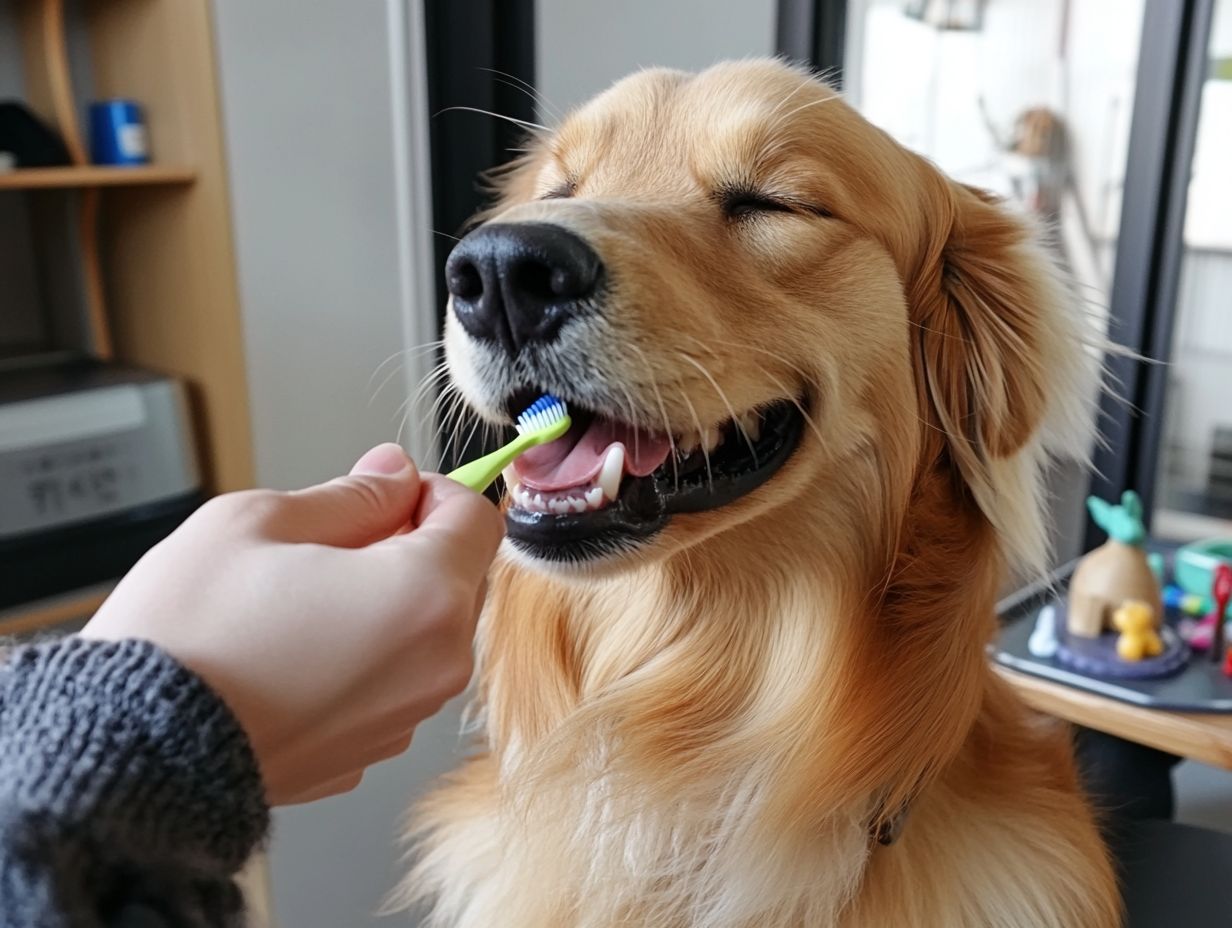
Ideally, you should be cleaning your dog’s teeth at least 2-3 times a week using dog toothpaste. Regular teeth brushing will help prevent the buildup of plaque and tartar, which can lead to dental disease and other health issues, as recommended by the American Veterinary Medical Association and the AKC.
2. Can I use human toothpaste to clean my dog’s teeth?
No, you should never use human toothpaste on your dog’s teeth. Human toothpaste contains ingredients, such as xylitol, that can be toxic to dogs. Instead, use a dog-specific toothpaste, such as those offered by PetLab Co., that is safe for them to swallow.
3. My dog won’t let me brush their teeth, what can I do?
Some dogs may be resistant to having their teeth brushed. You can try using a finger brush or a dog dental wipe to clean their teeth instead. Alternatively, there are dog dental chews and chew toys that can help keep their teeth clean, as endorsed by AKC S.T.A.R. Puppy and Canine Good Citizen classes.
4. How can I tell if my dog has dental issues?
Some signs to look out for are bad breath, red or swollen gums, yellow or brown buildup on their teeth, and difficulty eating. If you notice any of these symptoms, it’s important to take your dog to the vet for a dental checkup, possibly at a veterinary dental college.
5. Are there any natural ways to clean my dog’s teeth?
Yes, you can use natural ingredients such as coconut oil or a mixture of baking soda and water to clean your dog’s teeth. However, it’s still important to use a dog-specific toothpaste to ensure they are getting the proper dental care. Consider incorporating dog dental sprays or dog dental powders into their routine for enhanced oral hygiene.
6. Can I use a toothbrush to clean my dog’s teeth?
Yes, you can use a toothbrush to clean your dog’s teeth. However, make sure to use a soft-bristled dog toothbrush with flavors they enjoy and use gentle, circular motions. It’s also important to replace the dog toothbrush regularly to ensure it’s effectively cleaning your dog’s teeth.
